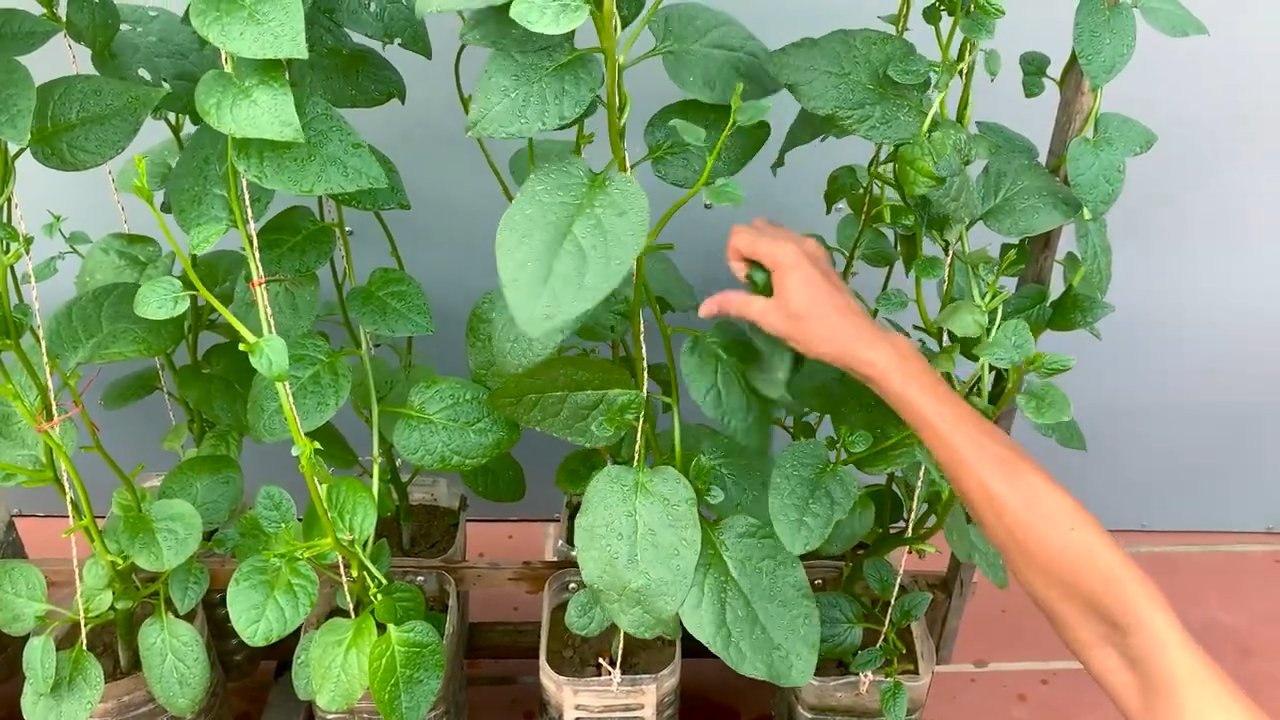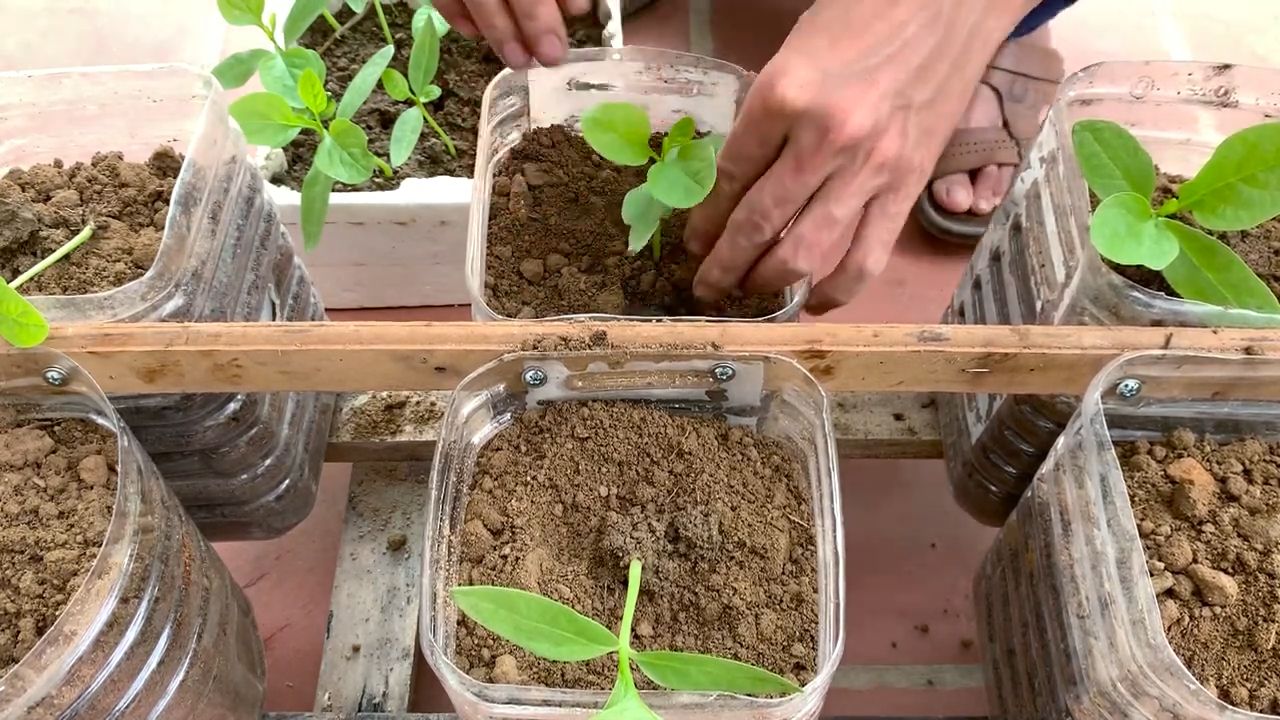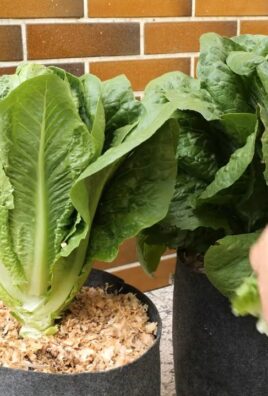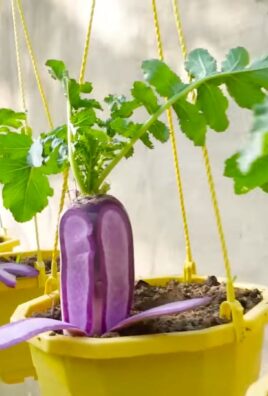Grow Spinach All Season? Absolutely! Imagine fresh, vibrant spinach gracing your table year-round, even when the snow is falling outside. Forget those limp, pre-packaged greens from the grocery store. This isn’t just a dream; it’s an achievable reality with a few clever home gardening tricks and DIY hacks that I’m excited to share with you.
Spinach, a leafy green powerhouse, has a rich history dating back centuries. Originating in ancient Persia, it gradually made its way across the globe, becoming a staple in cuisines worldwide. From Popeye’s legendary strength to its use in countless delicious dishes, spinach has earned its place as a nutritional champion. But let’s be honest, growing it can sometimes feel like a challenge, especially when the weather throws curveballs.
That’s where these DIY tricks come in! Many gardeners struggle with bolting (premature flowering) in hot weather or slow growth in the colder months. These simple, yet effective, techniques will help you overcome those hurdles and grow spinach all season long. I’ll guide you through everything from selecting the right varieties to creating microclimates that extend your growing season. So, grab your gardening gloves, and let’s unlock the secrets to a year-round spinach harvest!

Growing Spinach All Season: My Foolproof DIY Guide
Hey there, fellow gardeners! I’m so excited to share my secrets for growing spinach all year round. Forget those sad, wilted bags from the grocery store – fresh, vibrant spinach is totally achievable, even when the weather’s not cooperating. This guide is packed with tips and tricks I’ve learned over the years, and I promise, even if you’re a beginner, you can do this!
Choosing the Right Spinach Variety
First things first, let’s talk spinach varieties. Not all spinach is created equal, especially when you’re aiming for year-round harvests. Some are better suited for warmer weather, while others thrive in the cold. Here’s a breakdown of my favorites:
* For Spring and Fall: ‘Bloomsdale Long Standing’ is a classic choice. It’s slow to bolt (meaning it won’t go to seed quickly in warmer weather) and produces large, crinkled leaves. ‘Giant Nobel’ is another great option for its large size and mild flavor.
* For Summer: ‘Malabar’ spinach isn’t technically true spinach, but it’s a heat-tolerant alternative that tastes similar. It’s a vining plant, so you’ll need to provide it with a trellis or support. ‘New Zealand’ spinach is another heat-loving option with a slightly different flavor profile.
* For Winter: ‘Winter Bloomsdale’ is specifically bred for cold weather. It’s incredibly hardy and can withstand freezing temperatures. ‘Tyee’ is another excellent choice for its cold tolerance and disease resistance.
Preparing Your Garden Bed
Spinach loves well-drained soil that’s rich in organic matter. Before planting, I always amend my soil with plenty of compost. This not only improves drainage but also provides essential nutrients for healthy growth.
* Soil Testing: Ideally, you should test your soil’s pH. Spinach prefers a slightly acidic to neutral pH of 6.5 to 7.0. You can purchase a soil testing kit at most garden centers.
* Amending the Soil: If your soil is too acidic, add lime to raise the pH. If it’s too alkaline, add sulfur to lower it. I usually add a generous amount of compost (about 2-3 inches) and work it into the top 6-8 inches of soil.
* Drainage: Make sure your garden bed has good drainage. Spinach doesn’t like to sit in soggy soil, which can lead to root rot. If your soil is heavy clay, consider adding sand or perlite to improve drainage.
Planting Your Spinach
Now for the fun part – planting! The timing of your planting will depend on your climate and the variety of spinach you’re growing.
* Spring Planting: Sow seeds directly in the garden 4-6 weeks before the last expected frost. You can also start seeds indoors 2-3 weeks before the last frost and transplant them outdoors once the soil has warmed up.
* Summer Planting: Plant heat-tolerant varieties like ‘Malabar’ or ‘New Zealand’ spinach after the last frost. Provide shade during the hottest part of the day to prevent bolting.
* Fall Planting: Sow seeds directly in the garden 6-8 weeks before the first expected frost. This will give your spinach enough time to mature before winter sets in.
* Winter Planting: Plant cold-hardy varieties like ‘Winter Bloomsdale’ or ‘Tyee’ in late summer or early fall. Provide protection from the cold with row covers or a cold frame.
Step-by-Step Planting Instructions:
1. Prepare the Soil: Rake the soil smooth and remove any rocks or debris.
2. Sow the Seeds: Sow seeds about ½ inch deep and 1 inch apart in rows that are 12-18 inches apart.
3. Water Gently: Water the soil gently after planting to avoid disturbing the seeds.
4. Thin Seedlings: Once the seedlings emerge, thin them to 3-6 inches apart. This will give them enough room to grow and prevent overcrowding.
Protecting Your Spinach from the Elements
To grow spinach all season long, you’ll need to protect it from extreme temperatures and pests. Here’s how I do it:
* Row Covers: Row covers are lightweight fabric covers that protect plants from frost, insects, and strong winds. I use them extensively in the spring and fall to extend the growing season.
* Cold Frames: Cold frames are mini-greenhouses that provide extra protection from the cold. They’re perfect for growing spinach in the winter. You can buy a cold frame or build your own.
* Shade Cloth: Shade cloth is a mesh fabric that blocks out some of the sun’s rays. I use it in the summer to protect my spinach from bolting in the heat.
* Mulch: Mulch helps to retain moisture in the soil, suppress weeds, and regulate soil temperature. I use organic mulches like straw, hay, or wood chips.
Watering and Fertilizing
Spinach needs consistent moisture to thrive. Water deeply and regularly, especially during dry spells. Avoid overhead watering, which can lead to fungal diseases.
* Watering: Water spinach early in the morning to allow the leaves to dry before nightfall. This will help to prevent fungal diseases.
* Fertilizing: Spinach is a heavy feeder, so it needs regular fertilization. I use a balanced organic fertilizer every 2-3 weeks. You can also side-dress with compost or aged manure.
Dealing with Pests and Diseases
Spinach is relatively pest-resistant, but it can be susceptible to certain pests and diseases. Here are some common problems and how to deal with them:
* Aphids: Aphids are small, sap-sucking insects that can weaken plants. You can control them with insecticidal soap or by releasing beneficial insects like ladybugs.
* Slugs and Snails: Slugs and snails can damage spinach leaves. You can control them with slug bait or by hand-picking them off the plants.
* Downy Mildew: Downy mildew is a fungal disease that causes yellow spots on the leaves. You can prevent it by providing good air circulation and avoiding overhead watering. If you see signs of downy mildew, remove the affected leaves and spray the plants with a fungicide.
* Spinach Blight: Spinach blight is a viral disease that causes stunted growth and yellowing leaves. There is no cure for spinach blight, so it’s important to prevent it by planting resistant varieties and controlling aphids, which can transmit the virus.
Harvesting Your Spinach
You can start harvesting spinach leaves as soon as they’re large enough to eat. I usually harvest the outer leaves first, allowing the inner leaves to continue growing.
* Harvesting Technique: Use a sharp knife or scissors to cut the leaves off at the base of the plant.
* Harvesting Frequency: Harvest spinach regularly to encourage continued growth.
* Storage: Store spinach in the refrigerator in a plastic bag or container. It will keep for several days.
Extending the Harvest
To keep your spinach harvest going all season long, here are a few more tips:
* Succession Planting: Sow seeds every 2-3 weeks to ensure a continuous supply of spinach.
* Cut-and-Come-Again Harvesting: Instead of harvesting the entire plant, cut off the outer leaves and let the inner leaves continue to grow. This will allow you to harvest spinach multiple times from the same plant.
* Overwintering: In mild climates, you can overwinter spinach by protecting it with row covers or a cold frame. This will allow you to harvest spinach throughout the winter.
Specific Strategies for Each Season
Let’s break down the specific challenges and solutions for growing spinach in each season:
Spring Spinach
* Challenge: Bolting due to warming temperatures.
* Solution: Choose bolt-resistant varieties, provide shade during the hottest part of the day, and harvest frequently.
Summer Spinach
* Challenge: Intense heat and sunlight.
* Solution: Grow heat-tolerant varieties like ‘Malabar’ or ‘New Zealand’ spinach, provide shade with shade cloth, and water deeply and regularly.
Fall Spinach
* Challenge: Shortening days and cooling temperatures.
* Solution: Plant early enough to allow spinach to mature before winter, protect plants from frost with row covers, and choose cold-hardy varieties.
Winter Spinach
* Challenge: Freezing temperatures and lack of sunlight.
* Solution: Grow cold-hardy varieties like ‘Winter Bloomsdale’ or ‘Tyee’, protect plants with a cold frame or row covers, and provide supplemental light if needed.
My Favorite Spinach Recipes
Now that you’re growing your own spinach, you’ll need some delicious recipes to use it in! Here are a few of my favorites:
* Spinach Salad:

Conclusion
So, there you have it! Mastering the art of growing spinach all season long isn’t just a gardener’s dream; it’s an achievable reality with a little know-how and the right techniques. We’ve explored the secrets to extending your spinach harvest, from strategic planting schedules and choosing heat-resistant varieties to providing essential shade and consistent moisture. This DIY approach to spinach cultivation empowers you to enjoy fresh, nutrient-rich greens straight from your garden, regardless of the season.
Why is this DIY trick a must-try? Because it’s about more than just spinach. It’s about reclaiming control over your food source, reducing your reliance on store-bought produce (which often travels long distances and loses nutrients in the process), and connecting with the natural world in a meaningful way. Imagine the satisfaction of serving a vibrant spinach salad in the middle of summer, knowing that you nurtured those leaves from seed to table.
But the benefits extend beyond personal satisfaction. Growing your own spinach all season long is also an environmentally conscious choice. You’re reducing your carbon footprint by eliminating transportation emissions, minimizing plastic packaging waste, and avoiding the use of potentially harmful pesticides and herbicides often used in commercial agriculture.
Ready to take your spinach game to the next level? Consider these variations and suggestions:
* Succession Planting Experiment: Try staggering your plantings even more frequently, perhaps every two weeks, to ensure a continuous supply of young, tender leaves.
* Vertical Gardening: If you’re short on space, explore vertical gardening options like stacked planters or hanging baskets. Spinach thrives in these environments, especially when provided with adequate shade.
* Companion Planting: Plant spinach alongside other beneficial plants like radishes, lettuce, or strawberries. These companions can help deter pests, improve soil health, and even enhance the flavor of your spinach.
* Seed Saving: Save seeds from your best-performing spinach plants to ensure a consistent supply of high-quality seeds for future seasons. This is a great way to adapt your spinach to your specific climate and growing conditions.
* Hydroponics: For those in colder climates or with limited outdoor space, consider hydroponic spinach growing. This method allows for year-round spinach production indoors.
Don’t be afraid to experiment and adapt these techniques to suit your unique circumstances. Gardening is a journey of learning and discovery, and there’s no one-size-fits-all approach. The most important thing is to get started and observe how your spinach responds to different conditions.
We wholeheartedly encourage you to try this DIY trick for growing spinach all season long. We’re confident that you’ll be amazed by the results. And more importantly, we want to hear about your experience! Share your successes, challenges, and any tips or tricks you discover along the way in the comments below. Let’s build a community of spinach enthusiasts and help each other cultivate thriving gardens year-round. Your insights could be invaluable to other gardeners who are just starting out. So, grab your seeds, prepare your soil, and get ready to enjoy a bountiful harvest of fresh, delicious spinach all year long! Let us know how you are growing spinach all season.
FAQ
What are the best spinach varieties for all-season growing?
Choosing the right spinach variety is crucial for success. For warmer months, opt for heat-resistant varieties like ‘Malabar’ spinach (though technically not a true spinach, it tolerates heat well), ‘New Zealand’ spinach (another heat-tolerant alternative), ‘Tyee,’ ‘Regiment,’ or ‘Space’. These varieties are slower to bolt (go to seed) in hot weather. For cooler seasons, consider cold-hardy varieties like ‘Winter Bloomsdale,’ ‘Giant Nobel,’ or ‘Bloomsdale Long Standing.’ Experiment with different varieties to find what performs best in your specific climate.
How do I prevent spinach from bolting in hot weather?
Bolting is a common problem when growing spinach in warm weather. To prevent it, provide shade during the hottest part of the day using shade cloth or by planting spinach in a location that receives afternoon shade. Ensure consistent watering to keep the soil moist but not waterlogged. Choose heat-resistant varieties, as mentioned above. Regularly harvest leaves to encourage continued growth and delay bolting. Remove any flower stalks as soon as they appear to redirect the plant’s energy back into leaf production.
What is the ideal soil for growing spinach?
Spinach thrives in well-drained soil that is rich in organic matter. The ideal soil pH is between 6.5 and 7.0. Before planting, amend the soil with compost or well-rotted manure to improve its fertility and drainage. Avoid soils that are heavy clay or prone to waterlogging, as these can lead to root rot. If your soil is poor, consider growing spinach in raised beds or containers filled with a high-quality potting mix.
How often should I water spinach?
Spinach needs consistent moisture to thrive, especially during warm weather. Water deeply and regularly, aiming to keep the soil consistently moist but not soggy. Check the soil moisture regularly by sticking your finger about an inch deep into the soil. If it feels dry, it’s time to water. Avoid overhead watering, as this can promote fungal diseases. Instead, water at the base of the plants using a soaker hose or drip irrigation system.
What are common pests and diseases that affect spinach, and how can I control them?
Common pests that affect spinach include aphids, leaf miners, and flea beetles. Aphids can be controlled with insecticidal soap or by introducing beneficial insects like ladybugs. Leaf miners can be managed by covering plants with row covers to prevent adult flies from laying eggs. Flea beetles can be deterred by using diatomaceous earth or by planting spinach alongside repellent plants like radishes. Common diseases include downy mildew and white rust. To prevent these diseases, ensure good air circulation, avoid overhead watering, and choose disease-resistant varieties. If diseases occur, remove affected leaves promptly and treat plants with a fungicide if necessary.
Can I grow spinach in containers?
Yes, spinach grows well in containers, making it a great option for gardeners with limited space. Choose a container that is at least 6-8 inches deep and has drainage holes. Use a high-quality potting mix and provide consistent watering and fertilization. Place the container in a location that receives at least 4-6 hours of sunlight per day. Consider using a self-watering container to help maintain consistent moisture levels.
How do I fertilize spinach?
Spinach is a heavy feeder and benefits from regular fertilization. Before planting, incorporate a slow-release fertilizer into the soil. During the growing season, fertilize every 2-3 weeks with a balanced liquid fertilizer or compost tea. Avoid over-fertilizing, as this can lead to excessive leaf growth and reduced flavor.
When is the best time to harvest spinach?
Harvest spinach when the leaves are young and tender, typically when they are 4-6 inches long. Harvest regularly to encourage continued growth and prevent bolting. Cut the outer leaves first, leaving the inner leaves to continue growing. You can also harvest the entire plant at once by cutting it off at the base.
How do I store harvested spinach?
To store harvested spinach, wash it thoroughly and pat it dry with a clean towel or salad spinner. Store it in a plastic bag or container in the refrigerator. Spinach is best used within a few days of harvesting. To extend its shelf life, you can blanch it briefly in boiling water and then freeze it.
Can I grow spinach indoors during the winter?
Yes, you can grow spinach indoors during the winter using grow lights. Provide at least 12-14 hours of light per day and maintain a consistent temperature between 60-70°F. Use a well-draining potting mix and water regularly. Consider using a humidity tray to increase humidity levels.





Leave a Comment